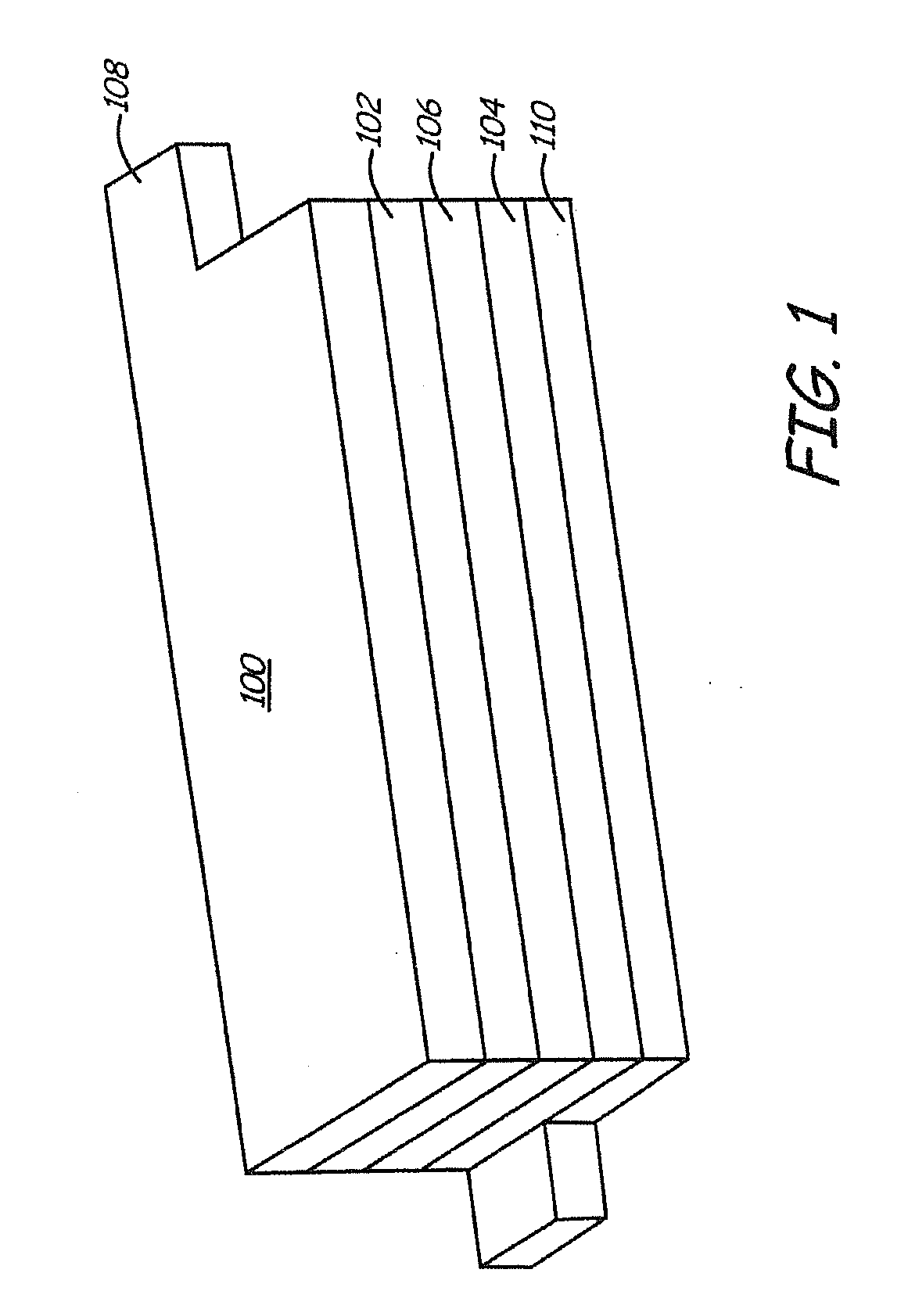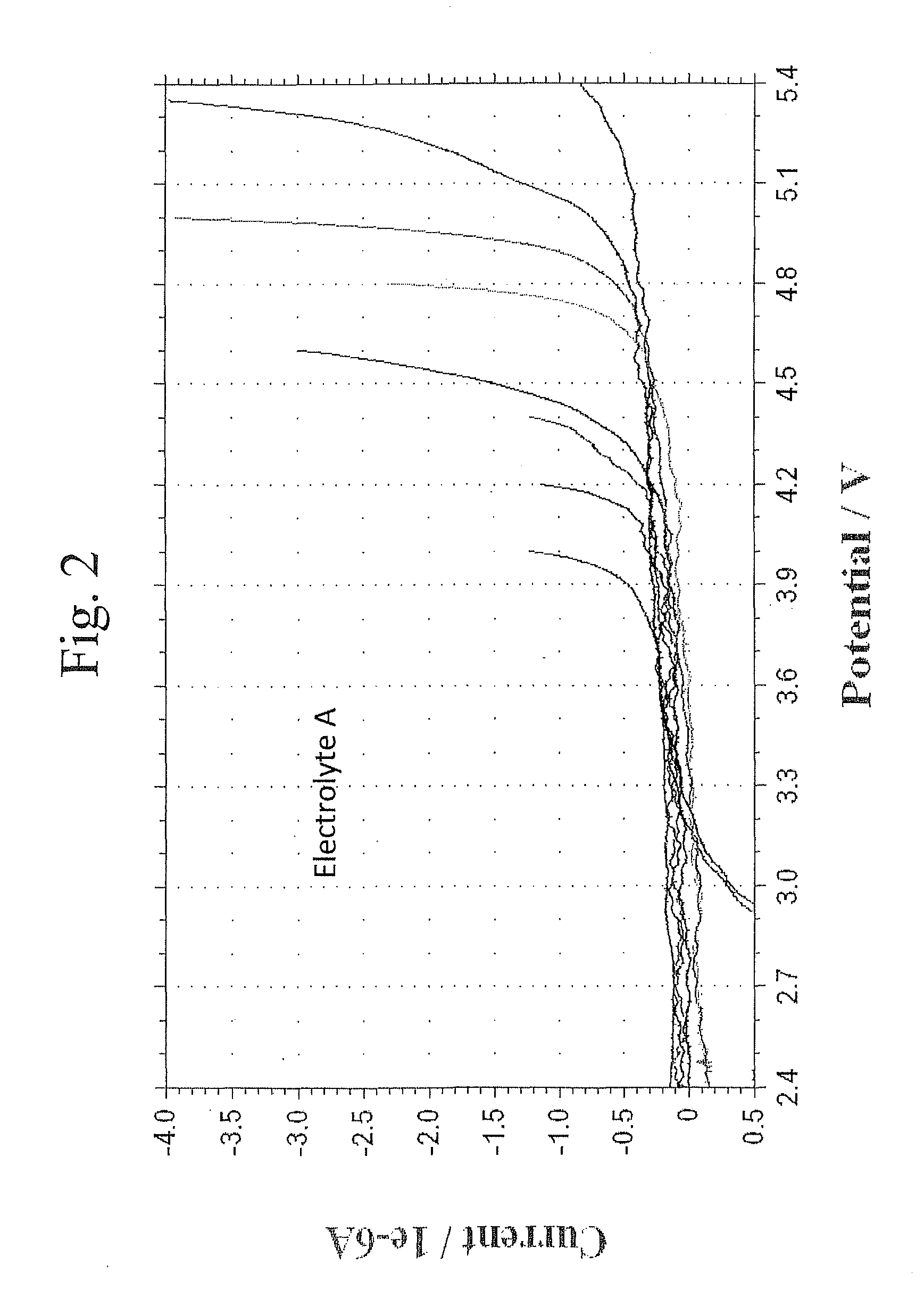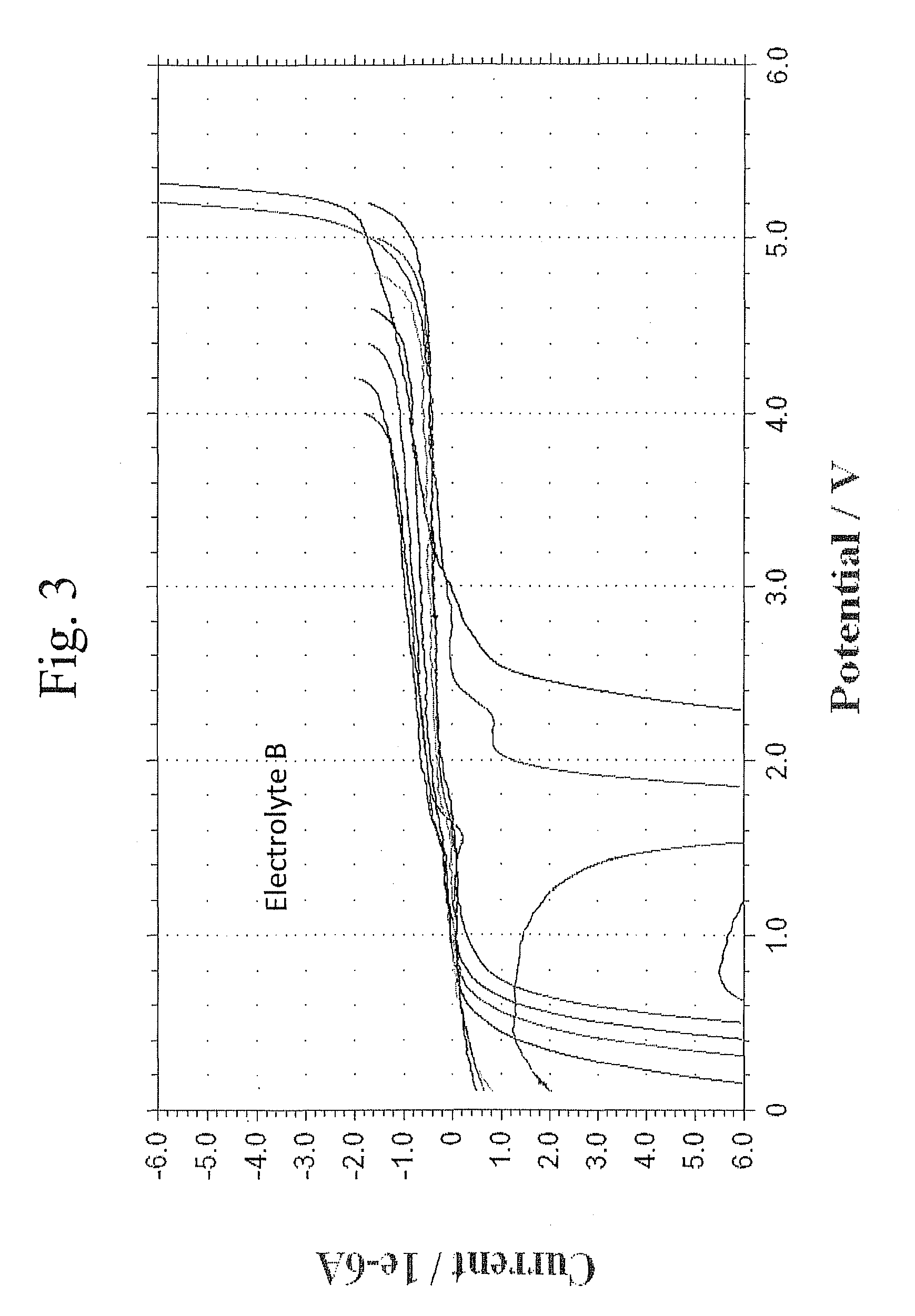Lithium ion battery with high voltage electrolytes and additives
a technology of additives and lithium ion batteries, applied in the field of lithium ion secondary batteries, can solve the problems of low energy density of battery cells, no significant improvement in energy density,
- Summary
- Abstract
- Description
- Claims
- Application Information
AI Technical Summary
Benefits of technology
Problems solved by technology
Method used
Image
Examples
example 1
Cyclic Voltammetry Analysis of Electrolytes With Different Solvents
[0090]This example evaluates the high voltage stability of representative electrolytes with different solvents using cyclic voltametry measurements.
[0091]The cyclic voltammetry measurements were performed in a beaker cell. A glassy carbon electrode was used as the working electrode and lithium metal was used as both the counter electrode and the reference electrode. A separator was placed between the lithium metal electrode and the glassy carbon electrode. The electrolyte was placed in the cell contacting the two electrodes. The potential between the electrodes was gradually increased at a selected scan rate. The current flow between the electrodes was measured. A large increase in the negative current indicates that a reaction, specifically oxidation of the electrolyte, is taking place. After reaching the maximum selected potential, the potential is reduced. If the reaction is reversible, a reduction reaction would ...
example 2
Cyclic Voltammetry Analysis of Electrolytes With Different Salt Concentrations
[0094]This example provides information of the oxidative stability of electrolytes with different salt concentrations.
[0095]The cyclic voltammetry was performed similarly to the study described in Example 1 except that the working electrode was platinum. The scan rate was again 10 mV / s. FIG. 4 shows the full cyclic voltammetry plots for an electrolyte with 1.2M LiPF6 in the solvent of electrolyte B of Example 1. For this electrolyte, as the voltage window is increased from 4.0 V to 5.2 V, no increase in current is observed. FIG. 5 shows plots of only the backward scans. It can be observed that the reduction current also does not increase for the electrolytes when the potential is maintained up to 5.2V. When the window is increased past 5.2V, there was an increase associated with the reduction current, which can be clearly observed between 2V and 3V. An increase in current associated with a reduction reacti...
battery examples
[0097]The coin cell batteries tested in Examples 3-4 were performed using coin cell batteries produced following a procedure outlined here.
[0098]Positive electrodes comprised coated lithium metal oxide particles, electrically conductive particles and a binder coated onto an aluminum foil current collector. The lithium metal oxide particles comprises a lithium rich layer-layer composition approximately represented by the formula Lil.2Ni0.175Co0.10Mn0.525O2. The lithium metal oxide composition was synthesized using a carbonate co-precipitation process, and the lithium metal oxide particles were subsequently coated with aluminum fluoride (AlF3) at an average thickness of about 10 nanometers. Further details of the of carbonate co-precipitation and coating processes can be found in U.S. patent application Ser. No. 12 / 332,735, now U.S. Pat No. 8,465,873 to Lopez et al, entitled “Positive Electrode Materials for High Discharge Capacity Lithium Ion Batteries,” incorporated herein by refere...
PUM
| Property | Measurement | Unit |
|---|---|---|
| voltage | aaaaa | aaaaa |
| charging voltage | aaaaa | aaaaa |
| charge voltages | aaaaa | aaaaa |
Abstract
Description
Claims
Application Information
 Login to View More
Login to View More - R&D
- Intellectual Property
- Life Sciences
- Materials
- Tech Scout
- Unparalleled Data Quality
- Higher Quality Content
- 60% Fewer Hallucinations
Browse by: Latest US Patents, China's latest patents, Technical Efficacy Thesaurus, Application Domain, Technology Topic, Popular Technical Reports.
© 2025 PatSnap. All rights reserved.Legal|Privacy policy|Modern Slavery Act Transparency Statement|Sitemap|About US| Contact US: help@patsnap.com



